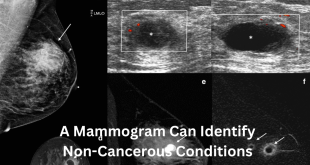Microtubule-associated protein tau (MAPT) is a crucial protein in the human brain, playing a central role in the development and maintenance of neuronal microtubules. It is encoded by the MAPT gene and is primarily expressed in neurons. Tau protein’s main function is to stabilize and promote the assembly of microtubules, which are part of the cytoskeleton and provide structure and shape to cells. They also enable the transport of organelles, vesicles, and proteins along their length. This transport is essential for the proper functioning of neurons, including the transmission of signals and the delivery of molecules and organelles to the axon terminal for neurotransmission.
Structure and Function of Tau Protein
Tau protein binds to microtubules through its microtubule-binding domain, which is composed of four imperfect repeats. The binding of tau to microtubules promotes their polymerization and inhibits their depolymerization, thereby stabilizing the microtubule structure. Tau also interacts with other microtubule-associated proteins and molecular motors, regulating their activity and the transport of cargo along microtubules. This regulation is important for the proper distribution of organelles and proteins in neurons and for the maintenance of neuronal polarity.
Role of Tau in Neurodegenerative Diseases
In addition to its role in microtubule stabilization, tau protein is also involved in neuronal signaling pathways. It can be phosphorylated by various kinases, which regulates its activity and interactions. Hyperphosphorylated tau can detach from microtubules, leading to microtubule destabilization and the formation of insoluble tau aggregates. These aggregates are a hallmark of several neurodegenerative diseases, including Alzheimer’s disease, frontotemporal dementia, and progressive supranuclear palsy, among others. The deposition of tau pathology follows a specific spatial and temporal pattern in the brain, with different brain regions being affected at various stages of disease. This pattern of deposition correlates with the progression of clinical symptoms in patients with tauopathies.
Propagation of Tau Pathology
Tau pathology can be propagated between neurons in a prion-like manner. With aggregated tau acting as a seed for the recruitment and aggregation of soluble tau. This process is thought to contribute to the progression of tau pathology in the brain. Tau aggregates can also be released into the extracellular space, where they can be taken up by other neurons, promoting the spread of pathology. This interneuronal transmission of tau aggregates may underlie the progression of tau pathology in the brains of patients with tauopathies.
Therapeutic Strategies Targeting Tau
Several therapeutic strategies are being developed to target tau protein in the treatment of tauopathies. These include active and passive immunotherapies, which aim to clear tau aggregates from the brain, and small molecule inhibitors of tau aggregation and phosphorylation. Tau-directed therapies are currently being tested in clinical trials for the treatment of Alzheimer’s disease and other tauopathies. These therapies hold promise for slowing or halting the progression of tau pathology in the brain and for improving the clinical symptoms of patients with tauopathies.
Applications of MAPT in Biomedical Research
Beyond its implications in disease pathology, MAPT holds promising applications in the domain of biomedical research, opening avenues for diagnostics and therapeutics.
- Biomarker for Neurodegenerative Diseases
MAPT emerges as a potential biomarker for neurodegenerative diseases. With abnormal levels or post-translational modifications serving as indicators in cerebrospinal fluid or blood.
- Therapeutic Target for Alzheimer’s Disease
Ongoing efforts focus on developing interventions targeting MAPT to disrupt the formation of pathological tau aggregates in Alzheimer’s disease. Small molecules, antibodies, and gene therapies are under exploration to modulate MAPT function.
- Neuroprotective Strategies
Leveraging MAPT’s role in maintaining neuronal structure, researchers are exploring neuroprotective strategies. Enhancing MAPT stability or promoting its normal function offers promising therapeutic avenues for neurodegenerative disorders.
MAPT, with its pivotal role in microtubule stabilization and neuronal functions, stands as a critical player in cellular biology. As we delve deeper into its intricacies, the potential for targeted interventions in neurodegenerative disorders becomes increasingly apparent. The journey from understanding MAPT’s structure and functions to unraveling its involvement in diseases and harnessing its potential in biomedical applications is a testament to the relentless pursuit of knowledge in the realm of cellular biology.
Conclusion
In conclusion, MAPT protein plays a critical role in the stabilization of neuronal microtubules and the regulation of microtubule dynamics. Its hyperphosphorylation and aggregation are central to the pathogenesis of several neurodegenerative diseases. Further research is needed to fully understand the mechanisms of tau pathology and to develop effective therapeutic strategies for the treatment of tauopathies. Elucidating the structural and functional properties of tau protein and the molecular mechanisms of tau pathology will be crucial for the development of novel therapies for these devastating diseases.
About the Author
Collected by Creative BioMart, a biotechnology company that provides a comprehensive list of recombinant proteins for research use. Featured MAPT proteins at Creative BioMart include: Recombinant Human MAPT, His-tagged, Recombinant Human MAPT protein. MYC/DDK-tagged, Recombinant Full Length Human MAPT protein, Flag-tagged, Recombinant Human MAPT Protein (216-391), N-AVI-tagged, Biotinylated. Recombinant Mouse Mapt protein, His-tagged, Recombinant Mouse Mapt Protein, Myc/DDK-tagged…
Creative BioMart started from a small supplier with the development and production of recombinant protein products. After years of development and growth, we currently have over 100,000 protein products. In addition, we have also expanded a series of related products such as native proteins, cell/tissue lysates, chromatography, lectins, and detection kits.
With over 100 international distributors from 49 countries, Creative BioMart serves the worldwide customers: most of the customers are from North America, 1/3 from EMEA, and others from Asia, Oceania, and other regions.
The company’s market direction is to expand into the global market and provide high-quality products and services to global customers.







